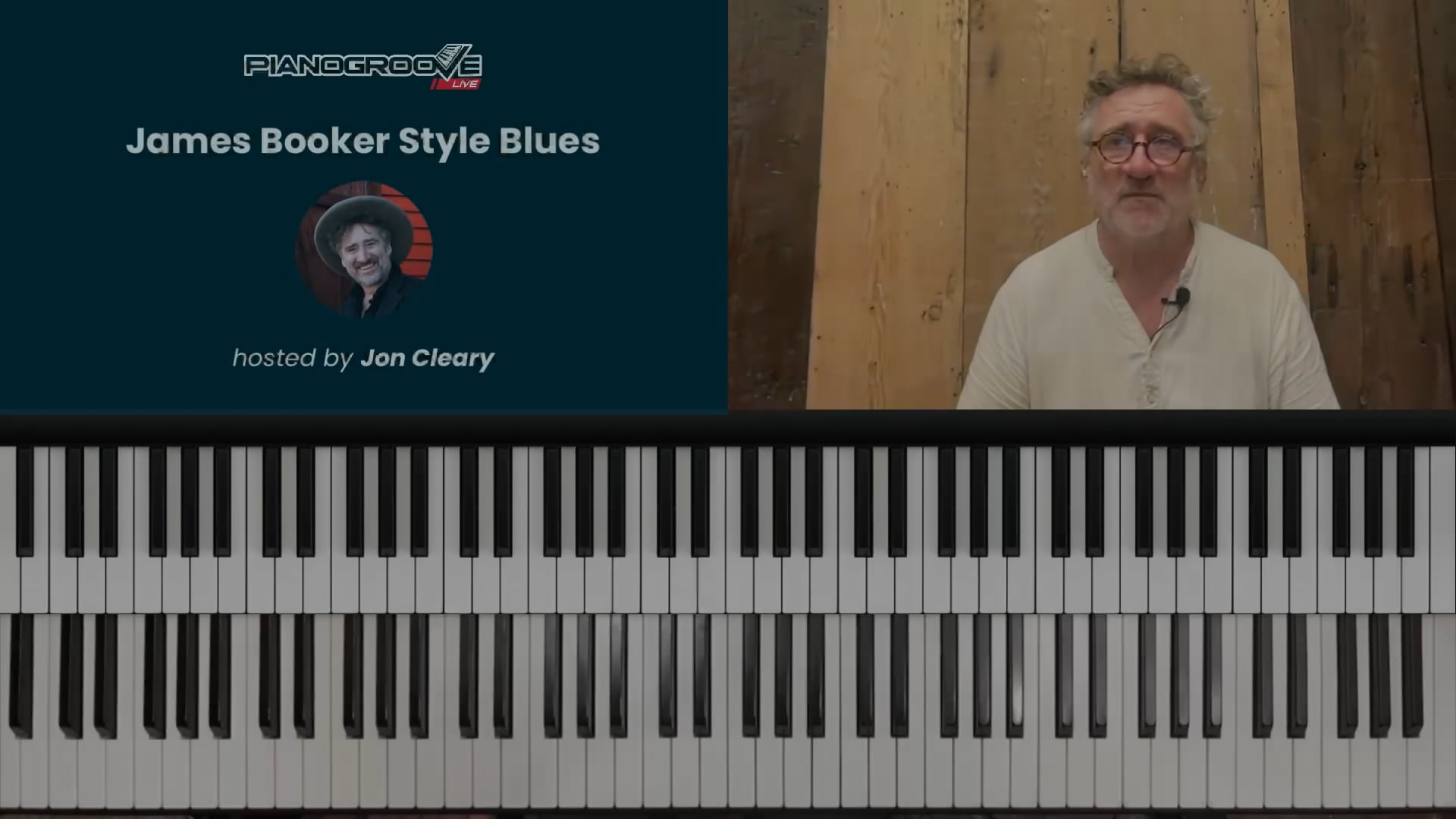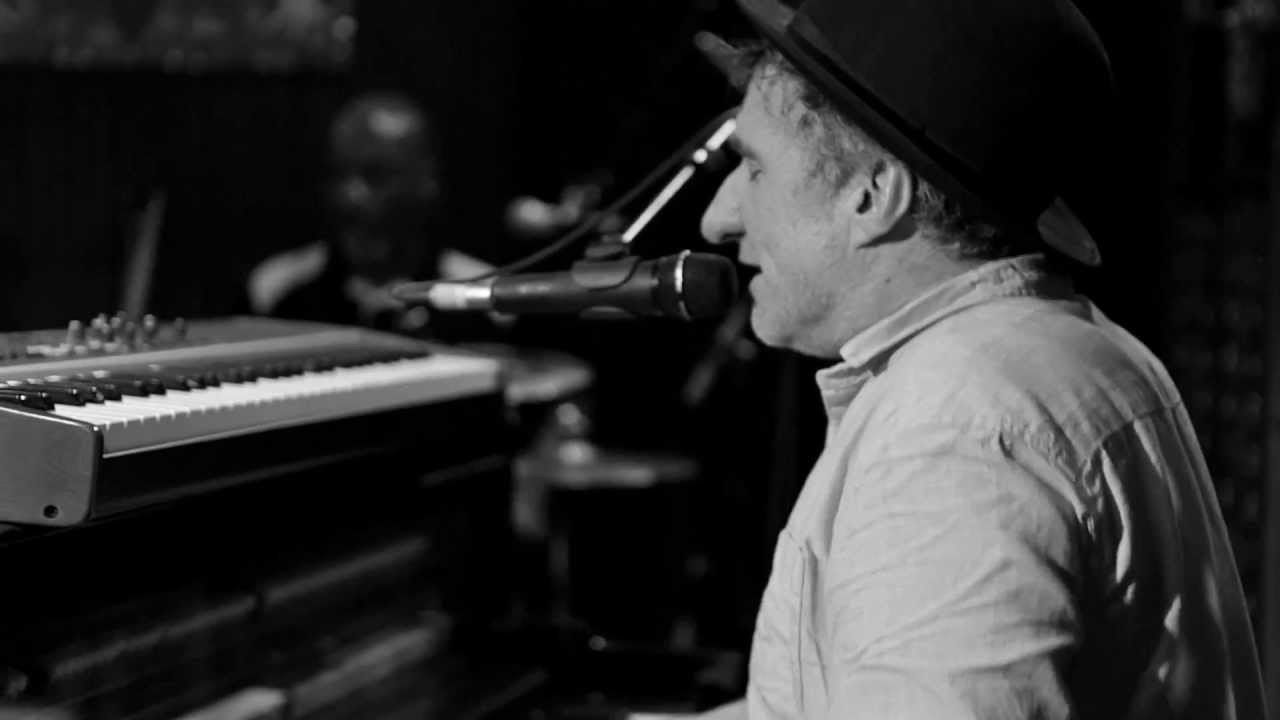

Jon Cleary
Jon Cleary is a British-born American funk and R&B musician based in New Orleans, Louisiana, where he has studied the musical culture and life of New Orleans for 35 years.
Seminar Description
Seminar Description
The Piano Style of James Booker
Welcome to this deep dive into the unique and soulful playing of New Orleans piano legend James Booker. In this lesson, we explore the key elements of his style, from his blues-infused harmonies to his use of tension, resolution, and rich chord substitutions. Booker’s playing was deeply rooted in gospel, blues, and jazz, yet it carried a distinctive flair that set him apart from other pianists.
The Influence of James Booker
James Booker was one of the most influential pianists to emerge from New Orleans, shaping the playing styles of musicians like Dr. John and Allen Toussaint. He had a formal background in classical music but was also deeply immersed in rhythm and blues, gospel, and jazz. His ability to blend these styles seamlessly into his playing is what made him a truly exceptional musician.
Harmonic Sophistication & Chord Substitutions
One of the defining features of Booker’s style was his use of complex chord substitutions. Instead of sticking to simple three-chord blues progressions, he enriched his harmonies with dominant 7th, diminished, augmented, and major 7th chords, adding layers of tension and resolution. This gave his music a sophisticated, yet deeply expressive, character.
For example, in blues progressions, instead of a standard I-IV-V (C7, F7, G7), Booker often used:
- C7 to E7 to F7 (chromatic movement creating tension)
- G7#5 instead of a plain G7 (enhancing harmonic richness)
- Passing diminished chords to create seamless transitions
These chord choices added unexpected twists to familiar progressions, keeping the listener engaged.
The Importance of 10ths in the Left Hand
Another hallmark of Booker’s playing was his use of tenths in the left hand—playing the root of a chord with his pinky while reaching up to the third of the chord with his thumb. This interval creates a full, rich sound, particularly in slow blues and ballads.
For example, in the key of C:
- A simple C to E (a 10th interval) creates a deep, resonant foundation.
- Instead of playing a blocky C7 (C-E-G-Bb), Booker would stretch his left hand to play C and E (a 10th apart), while filling in the rest of the harmony with his right hand.
His large hands allowed him to reach even further than a 10th, but pianists with smaller hands can roll the interval or break the chord into two notes for a similar effect.
Creating a Soulful Sound Through Tension & Release
One of the key elements that made Booker’s playing so moving was his masterful use of tension and resolution. He created emotional depth by delaying chord resolutions and leading the listener through a musical journey of expectation and release.
For instance, in a slow blues like Please Send Me Someone to Love, he would:
- Introduce a dissonant or suspended chord (e.g., G7sus4)
- Delay the resolution by adding passing chromatic notes
- Finally resolve into a strong, beautiful major chord (e.g., Fmaj7 to C7)
This technique is deeply connected to gospel and New Orleans blues traditions, making his ballad playing especially powerful.
Booker’s Unique Approach to Blues & New Orleans Groove
James Booker’s blues playing wasn’t just about the harmony—it was also about feel and groove. His left hand often moved with a rolling bassline, influenced by New Orleans piano greats like Professor Longhair and Fats Domino.
Key characteristics of Booker’s blues playing:
- Syncopation & rhythmic displacement: Instead of rigidly sticking to the beat, he played slightly ahead or behind, creating a laid-back groove.
- Walking basslines & boogie patterns: He incorporated stride-like basslines mixed with R&B-inspired walking bass patterns.
- Right-hand ornamentation: Blues licks, rapid-fire triplets, and slurred grace notes added a vocal-like expressiveness.
Exploring Latin & Classical Influences
In addition to blues and gospel, Booker infused his playing with Latin and classical elements. His renditions of Besame Mucho and Tico Tico showcase his syncopated rhythms, rolling left-hand figures, and chromatic embellishments drawn from Cuban and Brazilian styles.
His classical training was evident in the precision of his runs, his use of counterpoint, and the way he voiced chords. He often borrowed elements from composers like Chopin and Debussy but filtered them through the raw energy of New Orleans rhythm and blues.
5 Practice Tips for Learning James Booker’s Style
- Master the 10ths in the left hand – If your hands are too small to reach a full 10th, practice rolling the interval or breaking it into two notes.
- Experiment with chord substitutions – Try replacing simple dominant 7th chords with diminished, augmented, or altered voicings for richer harmony.
- Use tension and release in your playing – Don’t resolve every chord immediately; add passing tones and suspended chords to keep the listener engaged.
- Develop a strong sense of groove – Work on syncopated left-hand patterns and right-hand rhythmic embellishments to capture that New Orleans feel.
- Listen and absorb – Spend time listening to James Booker’s recordings and let his phrasing and harmonic choices seep into your playing.
James Booker’s piano playing is a masterclass in blending technical brilliance with deep emotion. By studying his approach to harmony, rhythm, and phrasing, you’ll not only improve your blues and jazz playing but also develop a unique voice of your own.
Happy practicing, and see you in the next lesson! 🎹






Very nice. Thanks again Jon . Wonderful as always